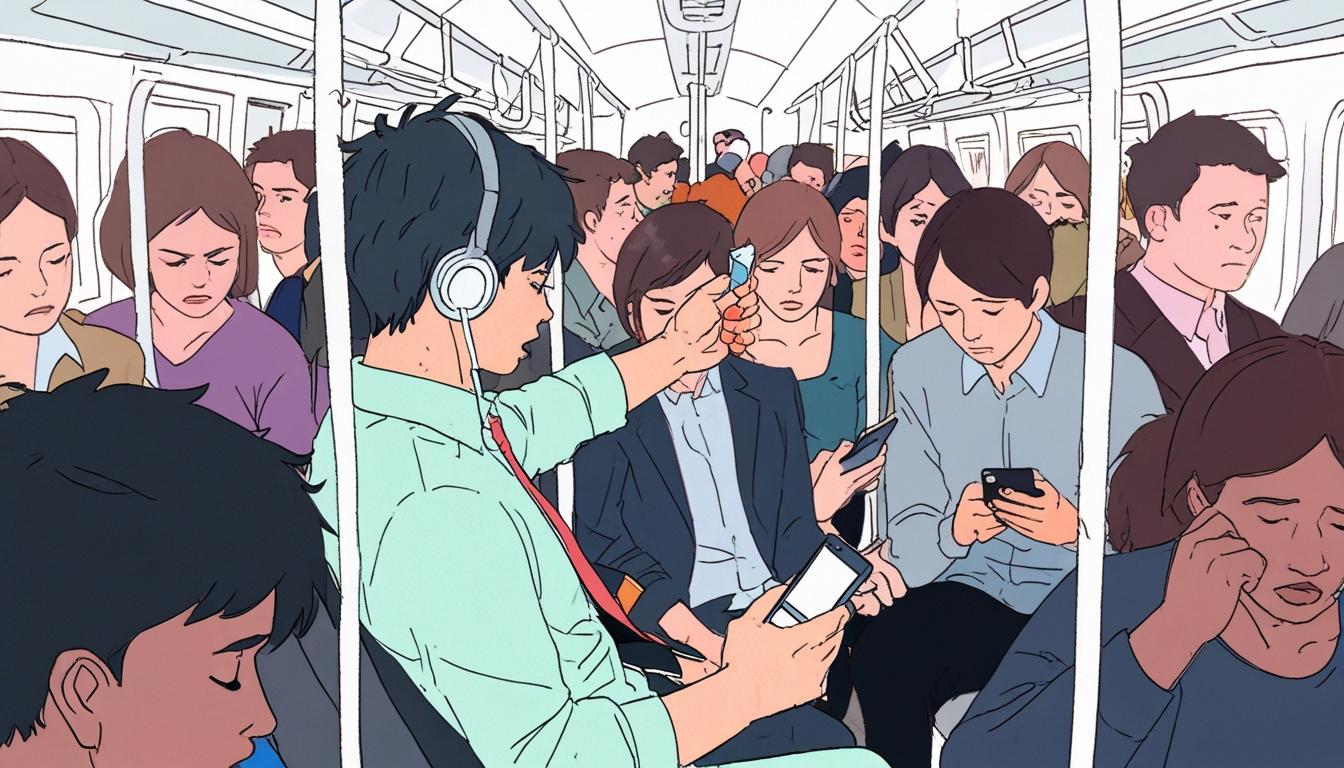In recent months, the rise of public disturbances caused by fellow commuters playing music or videos from their devices without headphones has ignited significant discussion in the UK. Popularly dubbed "bare beating," this trend reflects a growing frustration among passengers who struggle to enjoy a peaceful commute while others release their audio into the collective space around them. Commuters have been vocal about their dislike of this behaviour, noting that it often disrupts their journeys, whether on buses or trains. Social media platforms have become a hotbed for sharing these grievances, with users lamenting the behaviour and expressing confusion as to why it has become socially acceptable.
Amidst this backdrop, the Liberal Democrats have proposed new legislation aimed at tackling this issue head-on. Their initiative seeks to ban the use of loud audio devices on public transport, branding those who partake in such practices as “headphone dodgers.” They have called for fines of up to £1,000 for offenders, hoping to foster an environment where everyone can enjoy a moment of peace during their travels. Speaking on the matter, Lisa Smart, the party’s home affairs spokesperson, emphasised the need to protect commuters from antisocial behaviours. She highlighted that it is essential for individuals to feel respected and safe in public spaces, especially during their daily routines, which often include bustling public transport.
The situation, however, is not unique to the UK. Similar challenges have emerged globally. For instance, in Mumbai, the Brihanmumbai Electric Supply and Transport (BEST) has enacted regulations prohibiting loud cellphone conversations and requiring the use of headphones on buses to maintain a quiet atmosphere. This move is enforced under the Bombay Police Act, an attempt to mitigate disturbances and improve the commuting experience for all.
In a different context, the Southeastern Pennsylvania Transportation Authority (SEPTA) has similarly established policies against playing music without headphones, although enforcement of these rules has been inconsistent. Passengers are encouraged to report disturbances, placing the onus on the community itself rather than relying on strict policing. This approach draws attention to the importance of collective etiquette in shared spaces, where the responsibility often lies with individual passengers to uphold a respectful atmosphere.
In New York City, a focus on safety has shaped the conversation around public transport etiquette. Mayor Eric Adams has advised subway riders to refrain from wearing headphones, highlighting the importance of being aware of one’s surroundings in an effort to enhance personal safety. This initiative underscores a different but related concern: the need for situational awareness in a bustling metropolitan environment.
Across the Irish Sea, Iarnród Éireann, the Irish Rail company, has echoed similar sentiments, recommending that passengers use headphones to avoid disturbing others. They are also contemplating the expansion of their quiet carriage initiative to cater to those who prefer a noise-free environment, thereby striking a balance between community enjoyment and individual comfort.
The widespread nature of these discussions points to a significant shift in communal attitudes towards acceptable behaviour in public spaces. Polls reveal a growing public sentiment favouring penalties for loud audio use, reflecting a desire to reclaim peace in transit settings.
Moreover, charities such as Action on Hearing Loss have weighed in, warning that exposure to high volumes in public spaces can damage hearing health over time. Their partnership with transit authorities aims to promote awareness and protect passengers’ well-being, adding another layer of importance to the call for better etiquette.
As debates continue over the growing trend of "bare beating," it becomes increasingly clear that the challenge of noisy commuters is not just about personal preference but involves wider considerations of respect, safety, and community well-being. The question now remains: will these legislative efforts lead to a more harmonious public transport experience for all?
Reference Map
- Paragraph 1: [1]
- Paragraph 2: [1]
- Paragraph 3: [2]
- Paragraph 4: [3]
- Paragraph 5: [4]
- Paragraph 6: [5]
- Paragraph 7: [6]
- Paragraph 8: [7]
Source: Noah Wire Services
